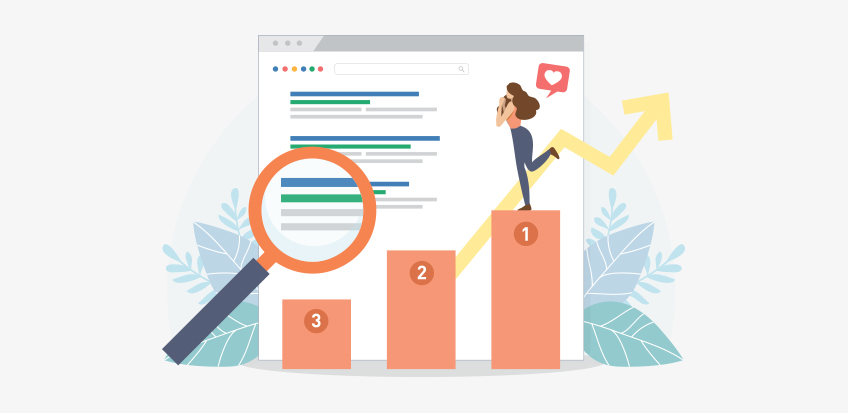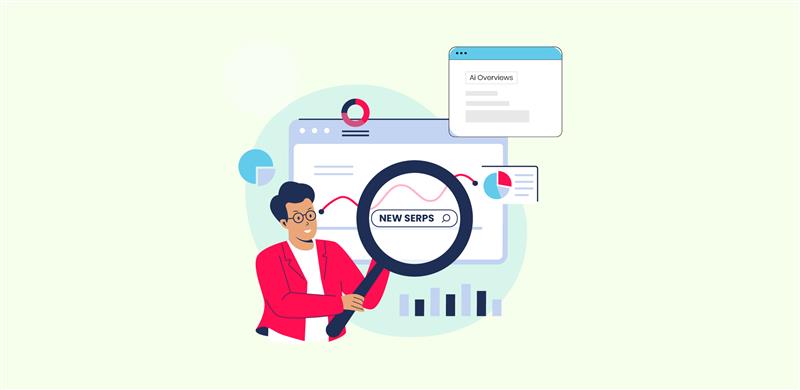Discover How Search Engines Work: Crawling, Indexing & Ranking
As search engines become ever more sophisticated programs, it’s always a good idea for SEO newbies – and professionals, too – to brush up their understanding of how search engines work. After all, trying to execute high-level campaigns without knowing the basics is like trying to shoot a three-pointer blindfolded. You may give it a try, sure, but you’re handicapping yourself from the get-go.
But that’s where this blog comes into play. I’d suggest you read it twice. Skim through it the first time to get a big-picture idea, and carefully go through the finer details the second time. This way, by the end of this blog, you will know what exactly is crawling, indexing, and ranking – the 3 things search engines do to return the most relevant results to the users’ search queries. It will also help you optimize your websites in a way that complies with the best practices of search engines like Google and increases your chances of ranking higher in the SERPs.
Crawling, Indexing, and Ranking
Let’s start with quickly understanding what each of these three terms means and see how they’re all connected. Basically, to deliver relevant results to its users, search engines need to:
- Find the information/pages that are out there on the web. That discovery is called crawling.
- Store that information in their database or index. That’s called indexing.
- Depending on what you search for, show you the results in a certain order. That order is called ranking.
That’s not that hard to understand, right? Well, on the face it, the process does seem simple, but each of these 3 factors has its own nuances and complexities. So, let’s discuss them in more depth, starting with crawling.
Crawling
Google has little programs called GoogleBots. We also call them crawlers or spiders. GoogleBots initially fetch only a few web pages but then follow the links on those web pages to find new pages. That’s why backlinks are so important for a website – it’s how crawlers discover new pages. By moving from one page to another, discovering new links, and crawling those, GoogleBots can discover billions of web pages on the internet to add them to Google’s database.
As a webmaster or a website owner, you should add a Robots.txt file in the root directory of your website. A Robots.txt file gives directives to crawlers about which parts of your site they should and shouldn’t crawl or index. You probably don’t want Google to crawl and index your staging or test pages, for example, so it’s a good idea to have them no-followed.

To see how many pages have been crawled by Google, you can check the Crawl Stats report in your Google Search Console; it gives you stats about Googlebot’s activity on your site for the last 90 days. You can also make use of Google Search Console’s Index Coverage report to know if crawlers are encountering any errors while crawling your website.
You should also keep Google’s Crawl Budget in mind. The Crawl Budget refers to the average number of URLs Googlebot will crawl on your site before leaving, so if you have tens of thousands of URLs, then you should optimize your robots.txt to ensure Google isn’t crawling unimportant or junk pages. Having a sitemap also helps Google make sense of your site architecture and understand which pages you think are more important.
Indexing
Now, let’s move on to indexing. While crawling is the discovery of pages, indexing handles the storing of the discovered pages in Google’s database or index. Think of it as a huge digital library with all the pages that Google has discovered.
If you want to see how many of your web pages have currently been indexed, just use this search operator:
site:yourdomain.com
For example, if you type “site:https://www.linkbuildinghq.com/” in the search bar, you’ll see the following results.

However, if the results return with nothing to show, there may be a few reasons for that. These can include:
- A code in your website blocks the search engine from crawling,
- Problematic site navigation,
- A penalty by Google for non-compliance
- Or your site could be relatively new and still undiscovered or have no external links.
Now, if you want, you can tell Google to crawl, but not index, certain pages using specific instructions in your Robot.txt file.
- For example, if you don’t want to index certain pages, use a NoIndex tag.
- For e-commerce sites, a NoArchive tag is handy to remove ages with outdated pricing.
- You can also make use of X-Robots-Tag to exclude specific folders or file types from being indexed.
Done with getting your website crawled and indexed? Let’s move on to ranking!
Ranking

Google uses hundreds of mini-algorithms, or ranking factors, to assess where and when to show your pages in its search results.
These mini-algorithms add up to form what we call Google’s ranking algorithm. Now, there have been several updates in Google’s algorithms over the years. Some minor, some major, but all aimed at making the user experience as smooth and convenient as possible.
How does Google figure out how to rank results? Well, the first thing it does is it tries to understand the search intent. Now, broadly speaking, there are 3 search types:
Navigational queries, where the searcher is looking for a particular website or webpage. Eg, Apple or Apple.com
Informational queries are where the searcher wants the answer to a question or learns how to do something. Eg the iPhone SE review
Transactional queries, where the searcher is considering making a purchase. E.g., Buy iPhone SE
Depending on your query, your location, search history, and other metrics, Google displays what it thinks are the most relevant results for you. That’s where the ranking factors come into play. While there are hundreds of ranking factors, you need to know at least the following to make sure you’re putting your best foot forward when it comes to ranking:
- The first one is the “Relevance of your content”. This ties into the relevance of your keywords. Is your content relevant to the searcher’s query? What keywords will they be using if you want them to click on your page? If you want to know more about how to find and use the right keywords for your website, here’s a useful blog to get you started.
- Webpage content length and quality also make a big difference. Quality content helps you stand out from your competition. Make sure you’re providing original or well-researched content that helps satisfy the user’s search query.
- Backlinks are one of the most important ranking factors in Google’s algorithm. They act like “votes” from one site to another. You should try to earn links from high-authority websites as that signals to Google that your content is trusted by websites that are, in turn, trusted by Google and seen as authoritative.
- If you’re generating a buzz for your brand, website, or content on social media, that’s a good sign. If your article’s being shared on Facebook or Linkedin, or if you’re being mentioned on Twitter and Instagram or other platforms, you’re earning citations and links for your brand, which, again, sends positive signals to Google.
- Google is moving towards mobile-first indexing, which means your website’s mobile version is now even more important than the desktop version. We wrote a blog on mobile-first indexing, which can help improve your understanding of it.
- Technical on-page SEO is as important as anything else. It includes having the right meta tags and headings, making sure your page can be crawled and indexed if you want it to rank, making it easier for search crawlers to understand your page, having a fast load time, using alt text for images, internal linking, having a secure site, deploying schema markup, and more.
Of course, this isn’t an exhaustive list of all of Google’s ranking factors. But it’s a good jumping-off point; it gives you an idea of what Google is looking for when it’s ranking different websites.
What is the difference between crawling and indexing in SEO?
Of the three of these terms, people often get these two confused as they aren’t able to tell the difference. Hopefully, after going through this entire piece, you won’t be one of those who will get confused.
So, with that, we wrap up this blog. Knowing exactly how search engines operate and what practices they consider essential in rewarding the complying websites can make it easier for you to just follow suit. Make sure to always keep tabs on all the updates happening in the SEO world and make improvements accordingly.







